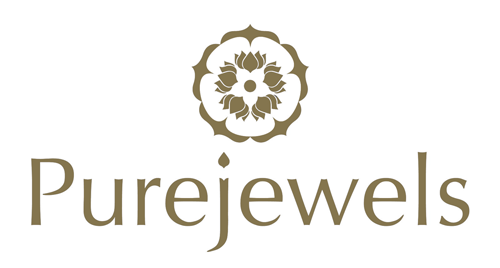Emeralds
EMERALDS

For centuries, Emeralds have captivated civilizations with their deep green radiance. From the Mughal courts of India to European royalty, these luminous gems have been cherished as emblems of power and enlightenment. At PureJewels, we honor this legacy by curating ethically sourced Zambian emeralds in partnership with Gemfields, blending their natural beauty with our heritage of fine craftsmanship.
Each PureJewels emerald is set in our signature Sunrise Gold, using age-old techniques of gold forging and stressing which enhances the vibrant energy of these natural wonders.

Conscious Luxury
Our emeralds are sourced from open-pit mines in Zambia, they follow a transparent, ethical process that prioritizes worker safety, fair wages, and environmental responsibility.
Zambian emeralds are celebrated for their rich bluish-green hue, setting them apart with superior clarity and cut.

ETHICAL SOURCING

CERTIFICATION

TRACEABILITY

Open-pit mines of Zambia
Emeralds are green gemstones from the Beryl family, cherished for their rich hues and their association with wisdom, renewal, and prosperity.
The emeralds in our Zariya Collection originate from Zambia, sourced from the Gemfields mine, renowned for producing some of the finest green gemstones with exceptional clarity and depth of colour.
To maintain the beauty of your emerald jewellery, avoid ultrasonic cleaners and harsh chemicals. Instead, clean it gently using mild soapy water and a soft cloth.
Emeralds have a hardness of 7.5 to 8 on the Mohs scale, making them durable but more brittle than sapphires or diamonds. Due to their natural inclusions, they require careful handling to prevent chipping or damage.
The value of an emerald is determined by the 7 Cs:
- Colour: The most valuable emeralds display a bluish-green hue, as opposed to yellowish-green. It is always advisable to view an emerald in natural daylight to assess its true colour.
- Clarity: Inclusions in emeralds provide insights into their formation, origin, and whether they have been treated. Higher clarity enhances the gemstone’s value.
- Carat Weight: Carat weight determines the size and dimensions of the emerald. However, due to differences in density, a 1.65 ct ruby may appear the same size as a 1.5 ct emerald. It is always recommended to check the millimetre (mm) size rather than relying solely on carat weight.
- Cut: The most common emerald cuts include oval, round, heart, pear, and cushion. The final cut is determined by the original shape of the rough emerald, with an ideal yield of approximately 30% to minimize wastage.
- Confidence: While not a quantifiable factor, confidence in an emerald’s authenticity comes from knowing its origin, mining history, treatment process, and handling before reaching the showroom.
- Character: Another non-quantifiable characteristic, the "magic appeal" of an emerald—the way it interacts with light and its unique charm—also plays a role in its desirability.
- Certificate: A certified emerald is backed by scientific analysis from a trusted gemological laboratory. Certification provides an official ID for the gemstone, confirming its authenticity and making it a crucial document for insurance and valuation purposes.
Yes, 90% of emeralds require treatment, which is a standard industry practice to enhance clarity and bring out their best colour.
The emeralds in our Zariya Collection undergo fracture-filling treatment using oil as a filler—a traditional and accepted method for improving clarity.
Unlike many laboratories that disclose only the extent of treatment, at PureJewels, we believe in total transparency and fully disclose both the type and level of treatment used on our emeralds.















